Charlie Portlock is doing what he loves the most, living in nature
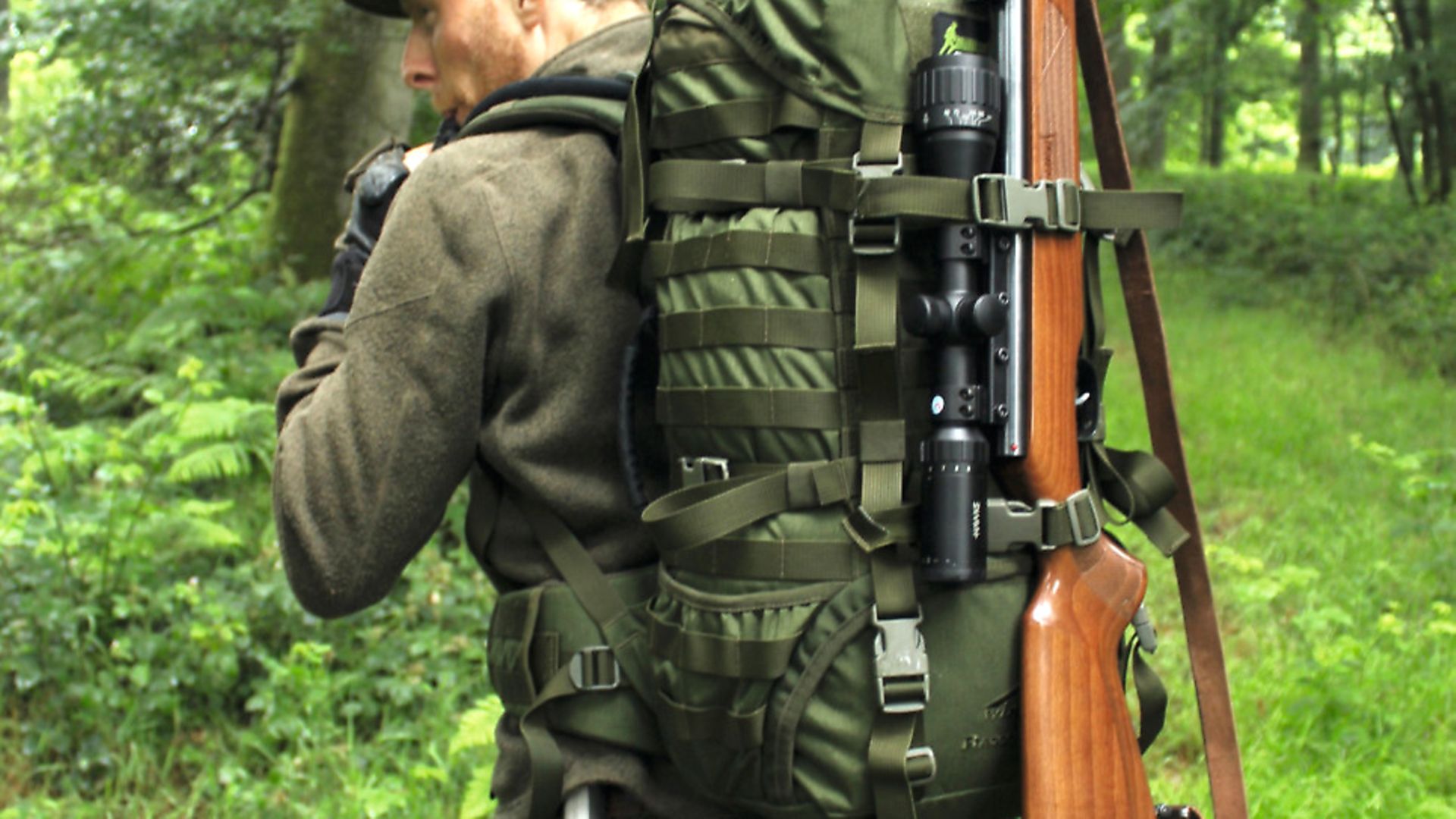 credit: Archant
credit: Archant
I awoke at 4am to the sound of an unknown bird circling my house. In half sleep, I thought it sounded like some kind of raptor, but the low, persistent screech was alien to me. When it landed on top of my wide open window and stooped to peer inside my bedroom, I sat up in bed, blinking hard in the half light and in awe of the wild hunter – a tawny owl – staring back at me and less than 10ft away.
In a firm low voice, I told it that it was not coming in and that it should be on its way. After a long pause and few heart-racing seconds of eye contact, it spread its silent wings and took flight, leaving both the window and my mind rocking slightly from the encounter. Had I been born in a different age, a visit from this graceful predator would certainly have been considered a powerful omen. In some ways, it still was.
With an unusual Friday free I spent the morning packing my rucksack for an overnight adventure with the rifle. The plan was to walk out of the door after lunch, taking a three-mile, cross-country hike over some of my linked permissions, ending up in a 70-acre patch of mostly deciduous woodland that was home to some fallow deer, my camera trap and plenty of game. I packed some salt, porridge, pasta and nuts and was hoping to augment this ration with some wild greens and woodpigeon, or perhaps a young squirrel.
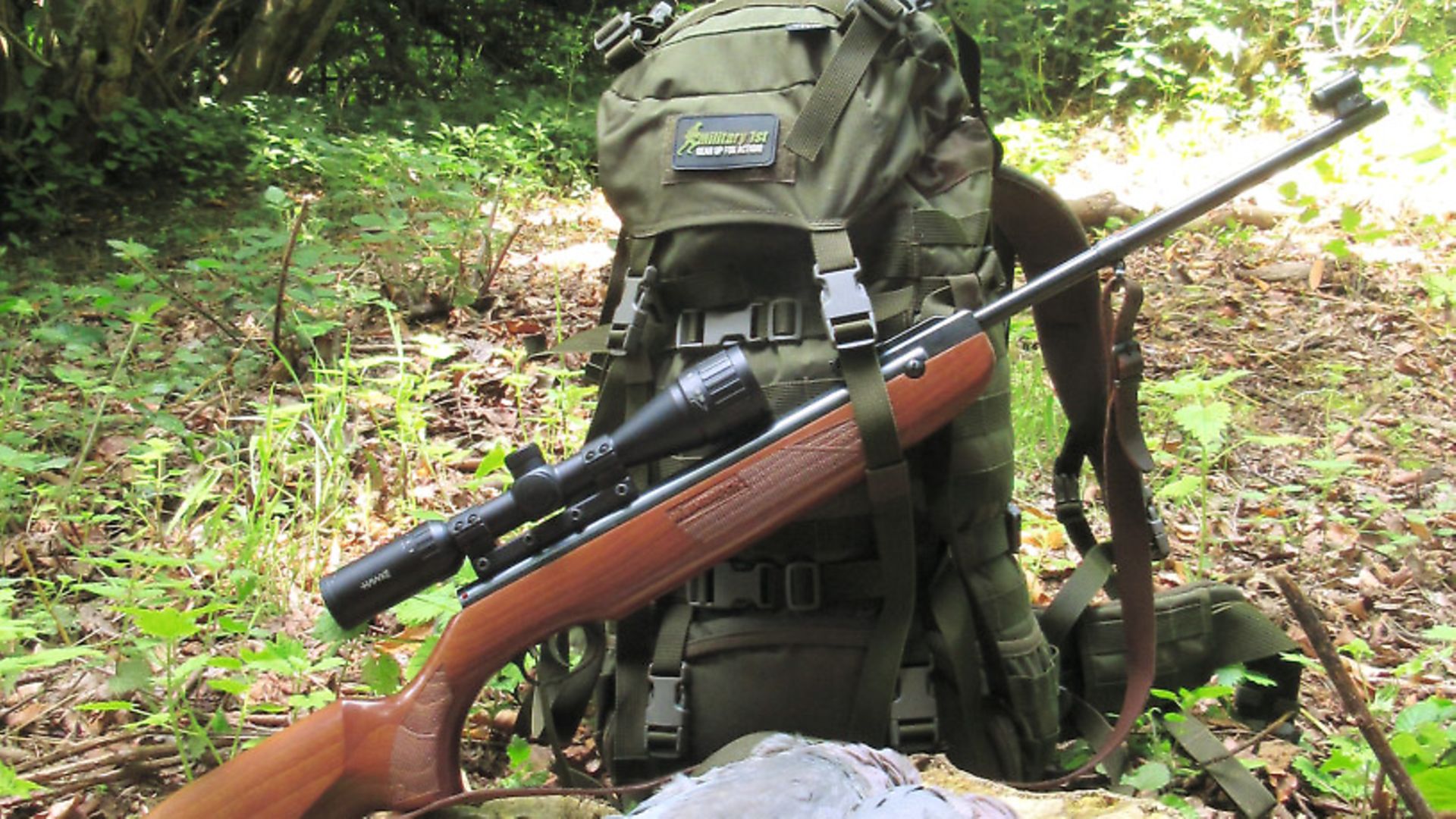 credit: Archant
credit: Archant
Kit list
I always find a huge amount of pleasure in selecting and editing the kit that I’m going to take with me on a hike, and adding a rifle to the mix only made this more exciting. For this trip, I chose the underrated HW99S. In addition to being very accurate and forgiving, it’s light – almost as light as the 95K – manoeuvrable, and has a short barrel, which would make stooping under branches easier with it strapped to the pack. For those who haven’t tried a 99, I fully recommend holding one.
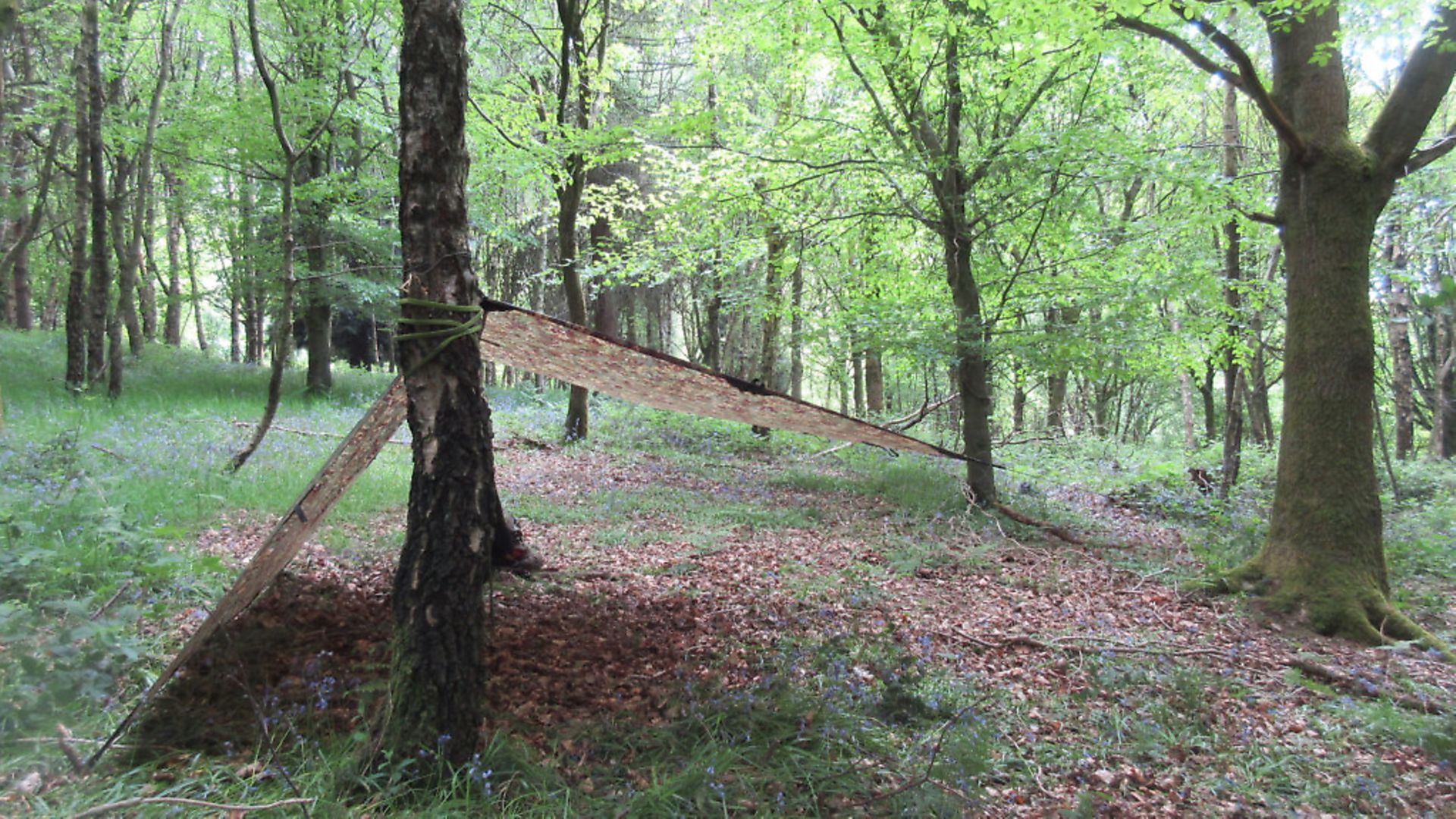 credit: Archant
credit: Archant
Pack it in
If you’re taller than average, it can be a challenge to find a small, overnight rucksack that has adequate load-bearing support and doesn’t come in those obvious, rescue-friendly colours; I like my packs to integrate into the environment as much as possible, so I normally buy military-issue rucksacks.
There are several good options at 45 litres and after lots of online research, I decided on the Polish military issue Wisport Raccoon 45 because this pack met all of my needs without any obvious compromises. It has a built-in rain cover and is both MOLLE compatible and fully adjustable. At 2.4kg it’s not the lightest pack, but it’s so rugged and versatile that I couldn’t resist it. Wiisport are not very well known in the UK, which is a real shame because this pack deserves more exposure. Many thanks to the team at the UK importer Military 1st for supplying me with the Raccoon (£169.95)for a long-term test; highly recommended.
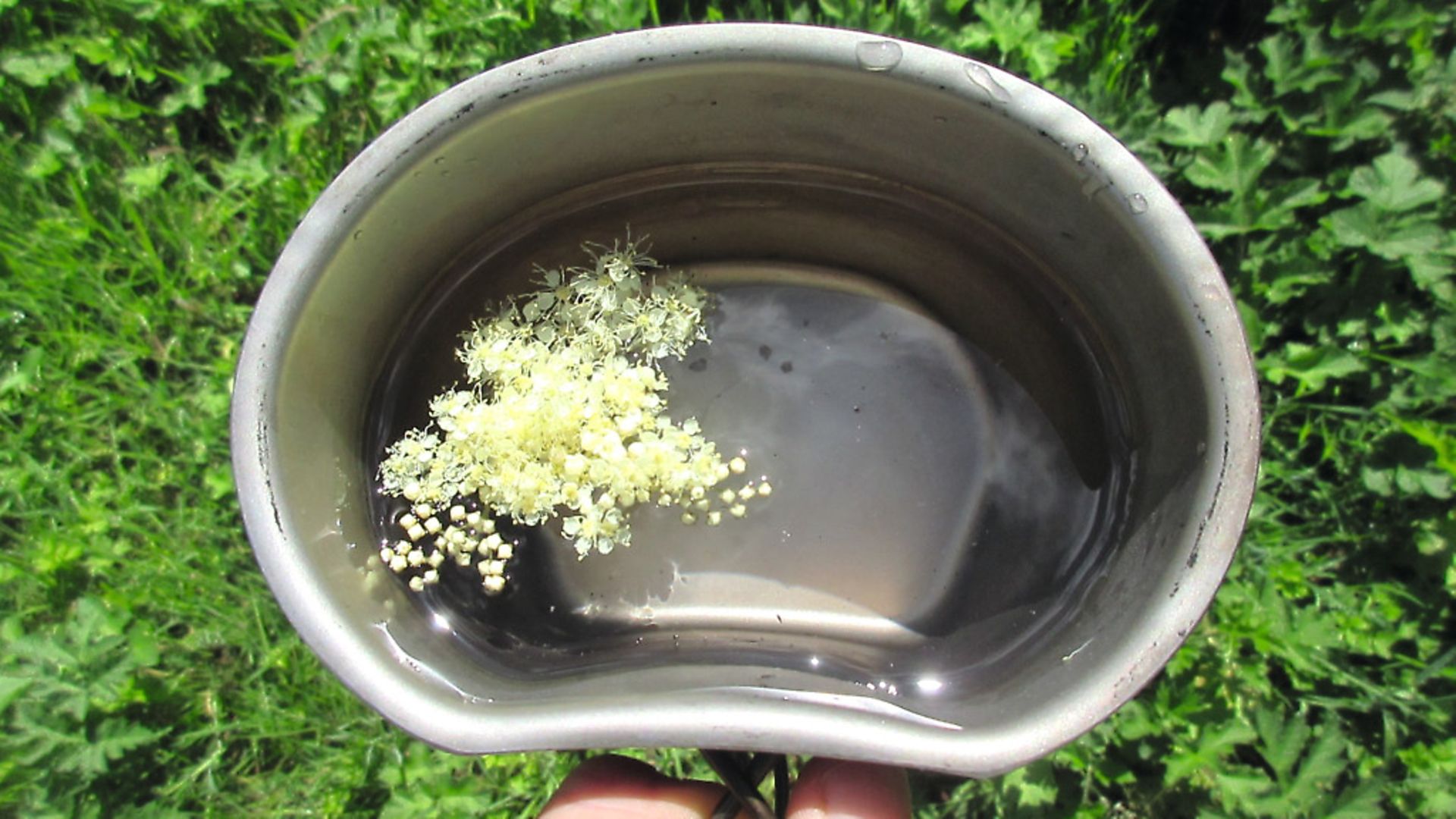 credit: Archant
credit: Archant
Sleep tight
For my sleeping system, I went with a DD camping hammock along with their ultra-light mosquito net (I’d need this) and multi-cam tarp’ in case of rain. Last year, I made the decision to ditch the tent for solo trips and it’s made sleeping outdoors more comfortable and more satisfying.
DD are a British hammock and shelter manufacturer with a well-thought-out product line specialising in ultra-light kit. However, as weight wasn’t too much of an issue on this trip, I used their standard range which amounted to a pack weight of 1.7kg and is a still a light option given the low cost-to-versatility ratio – the super-light range comes in at less than a kilo. It’s well-made Scottish gear that’s worth a look. My total pack weight with food and rifle was 14.5kg, just under the recommended 20% of my ideal body weight.
Woodpigeon
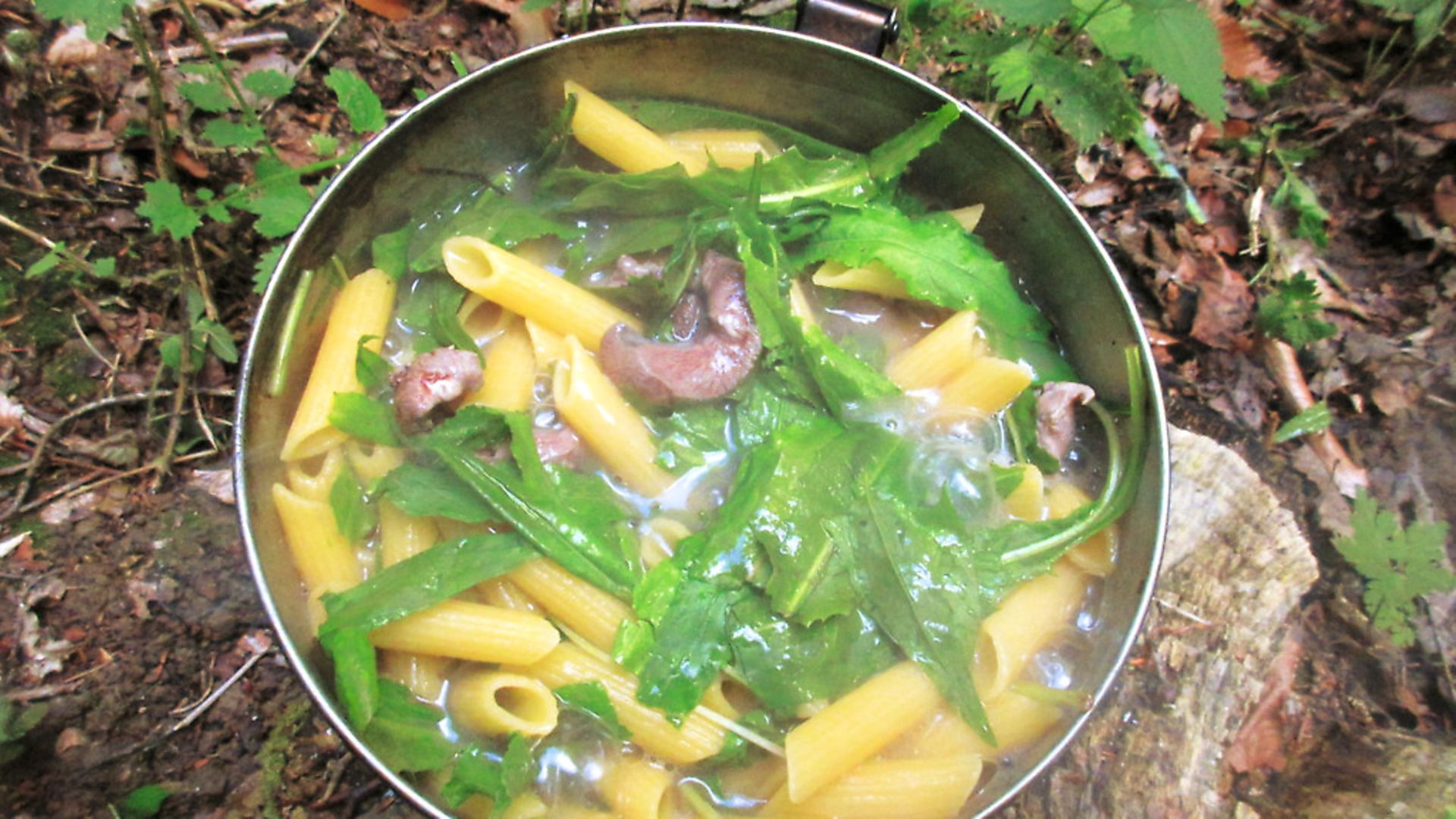 credit: Archant
credit: Archant
As I knew the area well, I already had a campsite in mind. There was water within walking distance, but more importantly, the broadleaves bordered an area of Douglas fir plantation that I knew was popular with woodpigeon. I planned to bag a couple of these tasty birds because they’re considerably less work to cook than squirrel and rabbits, which even when young, can be a bit chewy unless stewed or marinated. My walk gave the me the chance to gather some wild greens in the form of young dandelion and common dock leaves, and by 5pm, I was pleased to arrive at the campsite and have a mug of tea. With everything ready for my return, I set off for a slow stalk up to the patch of conifers on the edge of the woodland.
There was plenty of foliage on the deciduous branches and I was looking for ‘sitty trees’ among the fir. These are most easily found by the collection of white droppings and occasional feathers at the base, and are the favoured roosting spots of woodpigeon. The fir’s habit of dropping its lower branches as it grows makes it easier to see pigeon in its boughs than it is with broadleaves. On approaching the area, two squirrels came within range, but neither was tender enough for the pot so I ignored them and set up in some light cover with my back to an old oak stump. At about 20 yards from a sitty fir I felt confident that I was in the right place, but didn’t know how long I might have to wait.
After about 40 minutes, I was seriously considering a different approach to augmenting my supper; Perhaps a slow stalk in the pasture for a young rabbit, or a change of location for pigeons, but my luck was in and I forgot the aches in my body as two pigeon came to roost in quick succession. I’m no expert at this kind of shooting, but experience has taught me not to move until I hear the birds making their characteristic roosting ‘coo’ because this indicates that they’ve become as relaxed as they ever will. The first bird was at too steep an angle, but the second fluttered to a more comfortable position and presented a ‘base of neck’ shot, which I took to good effect after a couple of minutes for composition. After the impact, the other bird took clattering flight, along with at least one other that was unseen nearby.
Keep on moving
Should I move on or wait it out? Impatient to the last, I was happy with the one bird and chose to keep moving to another potentially good spot where I could also retrieve my trail camera. The ground was damp underfoot so my progress was slow but quiet, and en route came one of those rare airgunning moments that we all hope for when we take the obligatory pause to scan; a pigeon sailed into the upper branches of an ash tree bordering a woodland ride. It hadn’t seen me and had its back to me, partially obscured by the pinnate leaves of the tree.
Very slowly, I sank to sitting, but there was too much scope wobble so I edged silently back to a nearby beech, settled my back against it and dialled down the magnification to x6. I considered a shot through the leaves, but opted to wait and was rewarded five minutes later as the bird changed its position and I was able to take a 25-yard headshot that dropped it cleanly.
Settling in
With the birds in one hand and the rifle over my shoulder, I gathered some dead, standing elder and birch to start the wood gas stove, left the birds in the crook of a tree, and then set out to spend a satisfying half an hour gathering some pudding in the form of meadowsweet, ox-eye daisies and the last of the wild strawberries. After prepping the birds and boiling up a pretty comprehensive dinner, I washed up, set up the tarp’ and mosquito net and settled in to listen to the comforting sound of the wind and light rain greeting the canopy. As darkness fell I must have drifted off, only to be awoken suddenly in the dark by a strange but familiar sound; in the deep night, an owl was hunting.